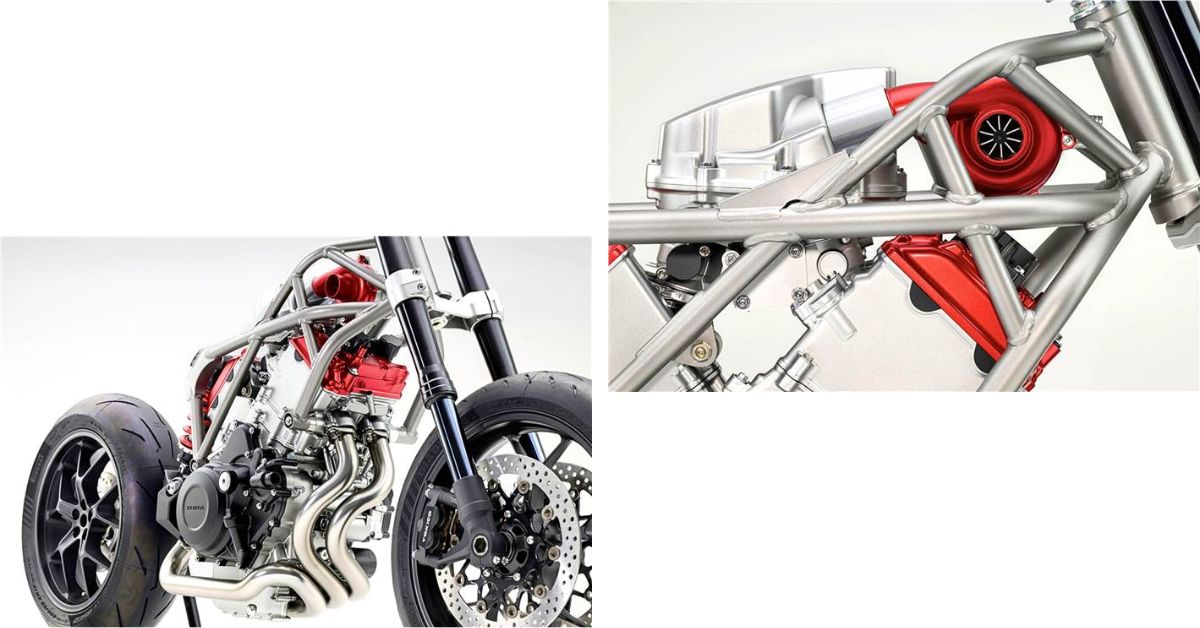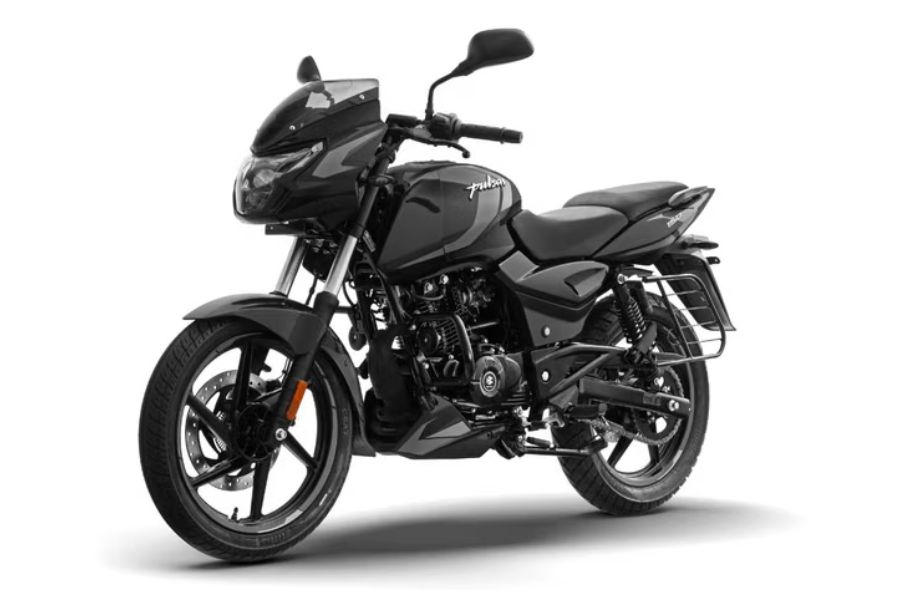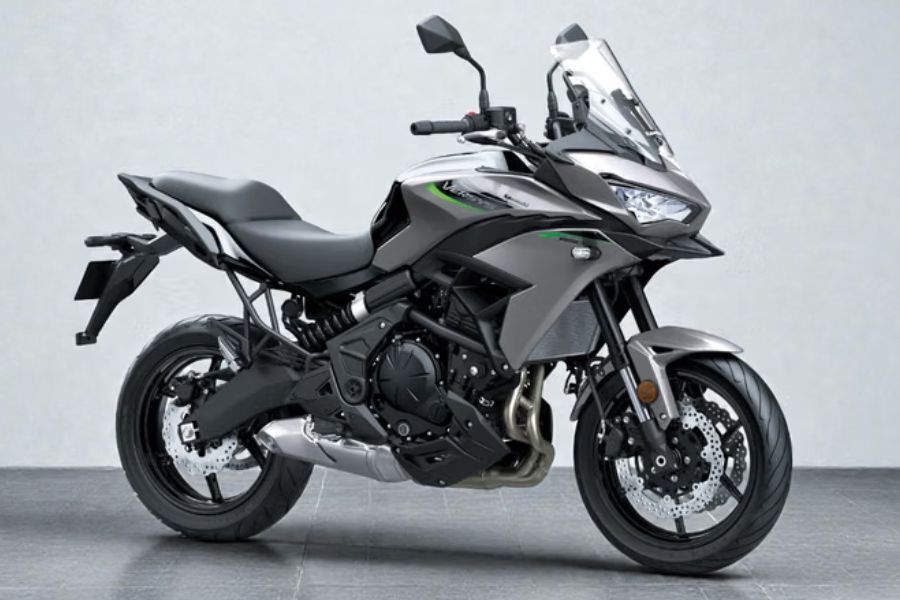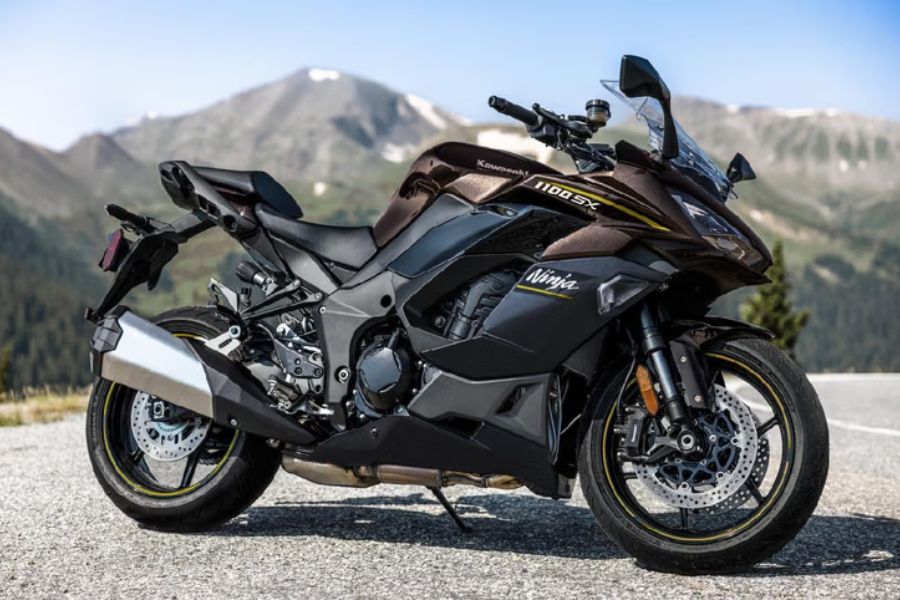Honda has unveiled a groundbreaking advancement in motorcycle engineering with the debut of the world’s first electrically compressed V3 engine, tailored specifically for large-displacement motorcycles. This new engine marks a significant leap in design, featuring a unique 75-degree V3 configuration that is not only compact but also boasts an electric compressor. This remarkable engine is water-cooled, promising substantial power and torque output within a smaller, more efficient structure that promises both high performance and responsiveness.
The V3 engine configuration consists of two forward-facing cylinders and a single rear cylinder, resulting in a balanced, compact layout that contributes to enhanced mass centralization. By placing two cylinders at the front and one at the rear, Honda’s engineers have crafted an engine design that promotes stability and nimbleness—a critical consideration for motorcycle dynamics. This setup ensures an ideal distribution of weight, allowing for improved handling and maneuverability. Given that motorcycle space is limited, this streamlined and compact design is a noteworthy achievement.

At the heart of the V3 engine’s innovation is the electric compressor, a groundbreaking feature that is new to the motorcycle industry. Unlike traditional superchargers or turbochargers, which rely on exhaust or engine speed to compress air, the electric compressor can independently regulate the intake air’s compression regardless of the engine’s revolutions per minute (RPM). This independence enables a consistent, powerful torque response across all RPM levels, providing riders with immediate acceleration and precise control over power delivery. Whether cruising at low speeds or accelerating rapidly on an open road, the V3 engine maintains a robust and linear power output, allowing for an agile and exhilarating riding experience.
The electric compressor also eliminates the need for an intercooler, a typical component in conventional turbocharged engines. By omitting the intercooler, Honda achieves an even more compact engine design, saving both space and weight. This design not only improves the overall aesthetic appeal of the motorcycle by maintaining a streamlined frame but also enhances performance by reducing the bike’s weight, contributing to its efficiency and agility. For a high-performance motorcycle, these space and weight savings are invaluable, providing a boost in efficiency that enhances both fuel economy and ease of handling.
Honda’s focus on mass centralization further highlights the engineering precision that went into this V3 engine. Centralizing the engine’s mass reduces its center of gravity, a feature that directly impacts the bike’s stability and handling. With this layout, the engine’s weight distribution is optimized, minimizing the gyroscopic effect, which often challenges the rider’s ability to make quick directional changes. Mass centralization also reduces the rider’s physical effort needed to control the motorcycle, making the V3 engine a rider-friendly choice that balances performance with practicality.
This innovative engine design also aligns with Honda’s broader commitment to creating versatile and rider-focused motorcycles. With the V3 engine’s introduction, Honda aims to attract both everyday riders and performance enthusiasts who seek a combination of power, efficiency, and ease of control. The company envisions this engine as a game-changer across multiple motorcycle categories, offering potential applications in touring bikes, sport models, and large-displacement motorcycles built for endurance and performance. By integrating this engine into a range of models, Honda intends to expand its portfolio with high-performance, rider-friendly motorcycles that cater to diverse riding preferences.
Honda is already preparing the V3 engine for mass production, signaling its readiness to integrate this technology into upcoming models. This move aligns with Honda’s goal of advancing motorcycle engineering while catering to riders’ evolving needs. The company believes that the electrically compressed V3 engine represents a new standard in motorcycle performance, combining innovation with practicality. As Honda gears up for production, riders around the world can look forward to experiencing a new era of power, responsiveness, and control that sets this V3 engine apart from traditional motorcycle engines.
In summary, Honda’s electrically compressed V3 engine exemplifies the company’s commitment to innovation in motorcycle engineering. With its compact design, electric compressor, optimized mass centralization, and adaptable power delivery, the V3 engine stands out as a pioneering force in the world of motorcycling. By pushing the boundaries of engine design, Honda is not only advancing the capabilities of large-displacement motorcycles but also setting a new benchmark for performance and versatility in the industry.
Read More:




